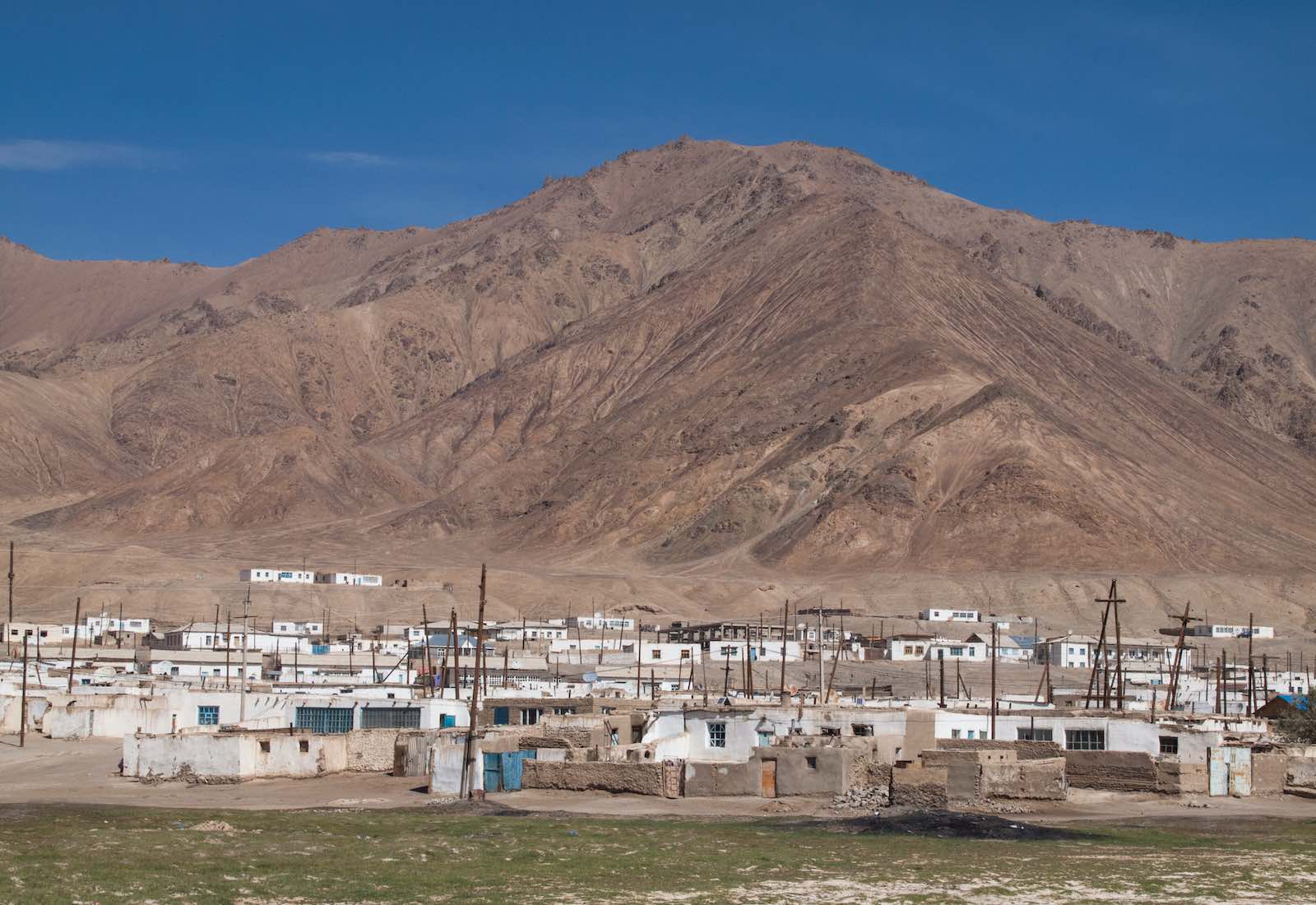SUZANNE LEVI-SANCHEZ

Recently, a Chinese diplomat stated that the Pamir mountains of Tajikistan belonged to China and always have. The region borders the Uighur Autonomous Region of Xinjiang and the city of Kashgar, where up to 17 Uighur concentration camps are located. Both the treatment of Uighur Muslims by the Chinese and their increasingly outspoken historical claims to the Pamirs have alarmed those in the region as well as the governments of Tajikistan and its close ally, Russia.
The scenario raises a number of questions. What are China’s goals in the region? Do they really believe that Tajikistan belongs to them? Is their penetration into Pamiri territory along their borders an indication of a long-term strategy in the region and an action that underpins their recent assertions about the region?
This past month, official outlets of the People’s Republic of China (PRC) repeatedly republished an article by Chinese historian Cho Yao Lu, who says that the entire Pamir region belonged to China at one time and consequently, he implies, Tajikistan should now or in the future return it to Beijing.
The territorial claim is based, at least in part, on a long history of Chinese presence in the region dating back to as early as the second century BCE. This previously unspoken belief of the Chinese government feeds into what many in Central Asia fear – namely that China’s strategy in the region is anything but transactional and utilitarian. Rather, they suspect that its goals are part of a larger strategy of neo-colonial and imperialist ambitions based on geographic and historical claims.
Negative comments about Chinese presence and activity in the Pamirs that started in the region over a decade ago have turned into vitriolic rumours and claims of Chinese takeover of the border area. When the Tajik government gifted a piece of land in the province of Gorno-Badakhshan in the Pamiri district of Murghab, along the Chinese border, many in the region believed their worst nightmares about Chinese intentions were coming true.
Tajikistan reportedly owes China US$1.2 billion, nearly half the country’s foreign debts of $2.9 billion. In order to pay off part of this debt, the government of Tajikistan in 2011 signed an agreement to give 1158 square kilometres of the Tajik Pamirs to China and in late 2019 gave China the rights to a potentially lucrative silver mine in the same region. Both are located near a new Chinese military base in Tajikistan, which, coupled with China’s land and resource grabs in Tajikistan, signals a marked uptick in Chinese military and security presence in the region.
At present, China is outpacing Russia, the US and the European Union in development funding, economic investment and security presence and partnerships in Tajikistan.
Russia is also watching carefully and is none too happy about China’s encroachment on what it views as its traditional role of protector and security purveyor in the region. In fact, a Russian-influenced or -supported social media campaign appears to be part of its strategy to highlight its disapproval of increased Chinese investment in the region, as well as debt-trap lending practices, which have disproportionately affected the Pamirs.
In addition to China’s burgeoning security apparatus, Chinese trucks and trade flood the area and the roads throughout the region. They have also installed traffic cameras, funded renovation and new construction of government buildings, and built numerous roads and tunnels in Tajikistan as part of their broader Belt and Road Initiative across the region. At approximately 25,000 square miles (65,000 sq km), the area is about the size of Sri Lanka, or six times the size of Lebanon, with a population of around 350,000 along both sides of the Tajik/Afghan border in Badakhshan with only about 3% arable land. It is reputed to be rich in minerals potential mines, however, and famous for its semiprecious and precious gemstones. It is reported that Tajikistan alone, according to the Chinese, have approximately 145 gold deposits.
At the same time, many in both Tajik Gorno-Badakhshan and Afghanistan’s neighbouring Badakhshan province point out that Chinese support is welcome. The Chinese government provides scholarships to sons of local leaders, funds bases and development, and requires very little in return from the governments on either side of the border. Since 2015, China has developed secret bases in Tajikistan and Afghanistan (both eventually made public), conducted joint exercises along the border, engaged in intelligence sharing and joint surveillance operations, and sold or provided military and security equipment to domestic militaries and police.
The Russians are watching all of this carefully and are playing both sides. On the one hand, they are engaging in active diplomacy and economic partnerships with China. At the same time, they are ramping up information campaigns in the region with local assets and spreading a message about the negative impact of Chinese presence and neo-colonial ambitions in the Pamirs, in particular.
 A
A The Tajik government’s reaction to a more vocal and assertive China in the region also underpins both their unwillingness to genuflect to China as well as their alliance and deep ties with Russia. The increasing Chinese trade, development and security agreements and partnerships with Tajikistan point to a willingness by the Tajik government to accept increased Chinese influence and control in the region, through mining agreements and territorial gifts. At the same time, the Tajik government placates Russia with rhetoric on pushing back Chinese encroachment on its territory, such as in the recent reaction by Tajik President Emomali Rahmon denouncing China’s claim to the northeastern part of Tajikistan.
It is likely Russia will pressure Rahmon to push back on China more than he is currently doing. This will put him in a bit of a pickle. The country’s many unpaid debts to the Chinese government for numerous projects in his country need to be paid somehow. At the same time, Tajikistan has a long history of placating Rahmon’s Russian security benefactor, Vladimir Putin. Rahmon has long played many sides as a means to his strategic ends, quite successfully. This will likely be the case for the foreseeable future. In 2012 he offset his country’s debt by leasing land in Tajikistan’s agricultural heartland, in addition to giving a slice of the north-eastern section of the Tajik Pamirs to the Chinese, as noted above. Shortly thereafter, he signed a security agreement for increased Russian military advisers and presence in the region. He then worked with the Chinese to allow them to build a base, engage in various other military exercises and maintain a presence in the country.
This is all at the same time as partnering with both the US and European Union in various development and security/military partnerships.
At present, China is outpacing Russia, the US and the EU in development funding, economic investment and security presence and partnerships in Tajikistan. What will change in the near future is the Russian-Chinese relationship and the use of tactics and messaging to discredit or undermine influence of the other.
How this plays out and how much China and Russia either partner in the region as a means to counter the US and EU or begin to compete with each other will determine the course of events in the region for some time, and will go some way to answering questions of China’s intentions.
No comments:
Post a Comment